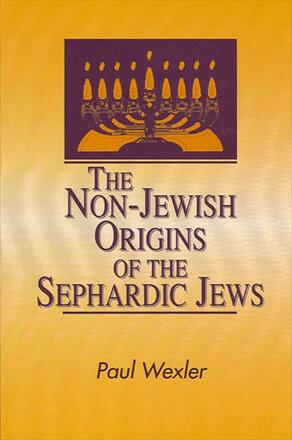Abbreviations and Citations
A Note on Citations and Linguistic Terminology
Preface
1. Approaches to the Study of Jewish Ethnicity and Ethnic Myths
2. Conversion to Judaism in the Asian, African, and Iberian Lands up to c.1200 A.D.
The Role of Conversion in the Formation of the Sephardic Jews
The Migration of Western Asian Jews to the Western Mediterranean
The Role of Western Asian Converts in the Formation of the Sephardic Jews
Conversion to Judaism in North Africa and Spain
The Contribution of Women Converts to the Formation of the Sephardic Jews
Syncretistic Religious Expression in Spain (with special attention to the Marranos)
3. The North African Homeland of the Sephardic Jews and the Origin of the Term "Sephardic"
The Alleged "Hispanicity" of the Sephardic Jews
Towards a New Periodization of Sephardic History
4. The Berbero-Arab Roots of the Sephardic Jews
Evidence from Language
The Status of Palestinian Hebrew and Judeo-Aramaic and the Determination of Sephardic Ethnic Origins
Jewish Onomastics as a Reflection of the Ethnic Origins of the Sephardic Jews
Jewish Migration from North Africa to Spain as Reflected in North African Latin and Greek Elements in Judeo-Arabic and Judeo-Spanish
The Arabic Imprint on Judeo-Spanish and Judeo-Spanish "Hebrew"
Iberian Judeo-Spanish Arabisms which are Unique in Inventory, Form, or Meaning
The Arabized Pronunciation of Judeo-Spanish and Judeo-Spanish "Hebrew"
Arabic Grammatical process in Judeo-Spanish and Judeo-Arabic/Judeo-Spanish "Hebrew"
The Broken Plural in Judeo-Spanish "Hebrew" and Judeo-Arabic
Periphrastic Verbs with Hebrew Components in Judeo-Spanish
The Agentive Formation in Judeo-Spanish and Judeo-Spanish "Hebrew"
World Order in Compund Numerals in Judeo-Spanish "Hebrew"
Determination in Modified Noun Phrases in Judeo-Spanish "Hebrew"
Derived Verb Forms in Judeo-Spanish "Hebrew"
The Copying of Arabic Patterns of Discourse in Judeo-Spanish and Judeo-Spanish "Hebrew"
The Common (")Hebrew(") and (")Judeo-Aramaic(") Corpus of Judeo-Arabic and Judeo-Spanish
The Impact of Berber on Iberian (Judeo-)Arabic and (Judeo-)Spanish
Evidence from Religion and Folk Culture
5. The Processes of Judaization
The Elimination of Berber and Arab Practices
The Retention of Obsolete Berber and Arab Practices and their Nomenclature
The Espousal of Ashkenazic, Provencal, Romaniote, and New Berber and Arab Practices
The Recalibration of Christian Terms and Practices
The Recalibration of Muslim Arabic Terms and Names in Iberian Judeo-Arabic and (Judeo) Spanish
6. Findings and Challenges
Bibliography
Index of Names and Topics
Index of Segments, Words, and Phrases
